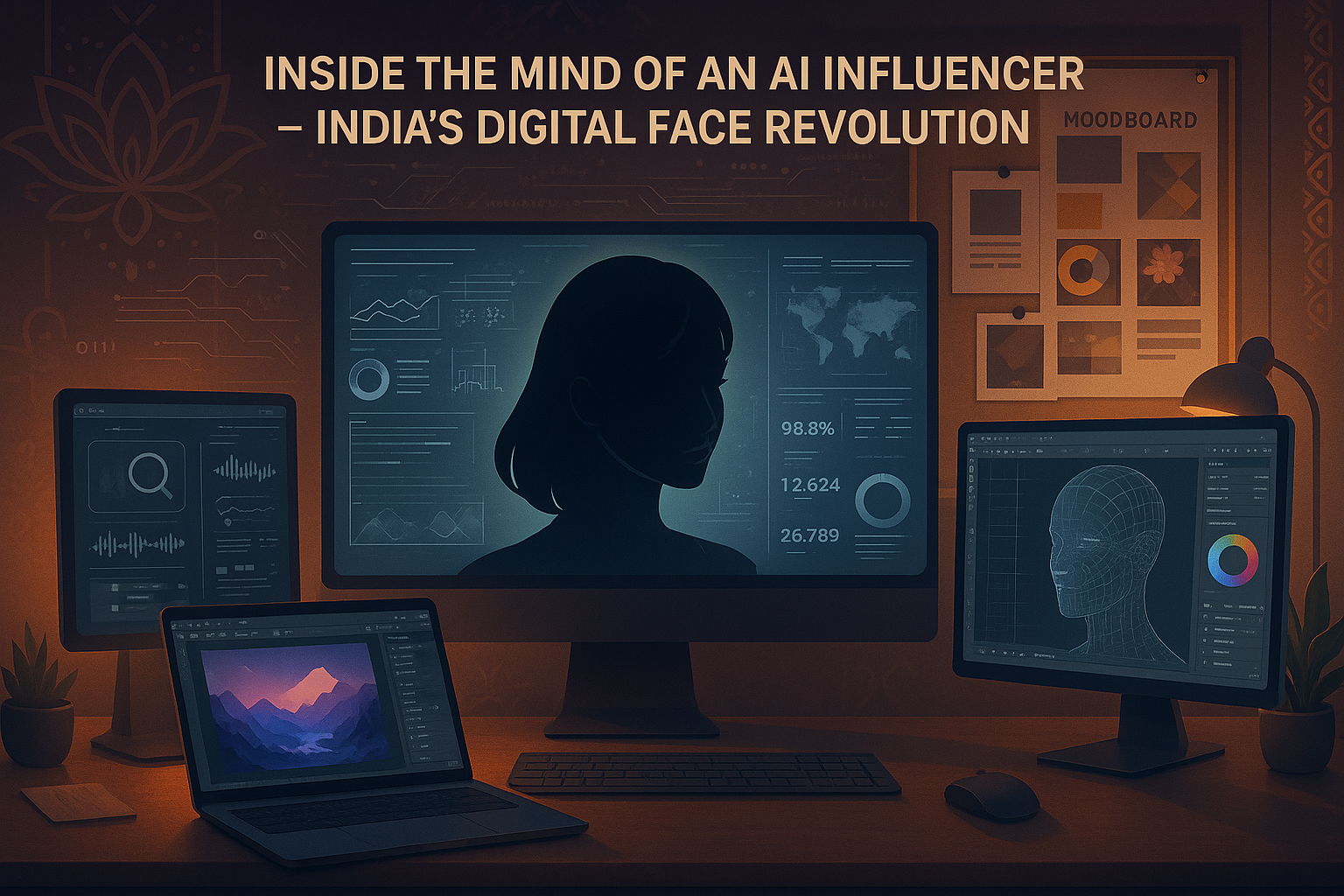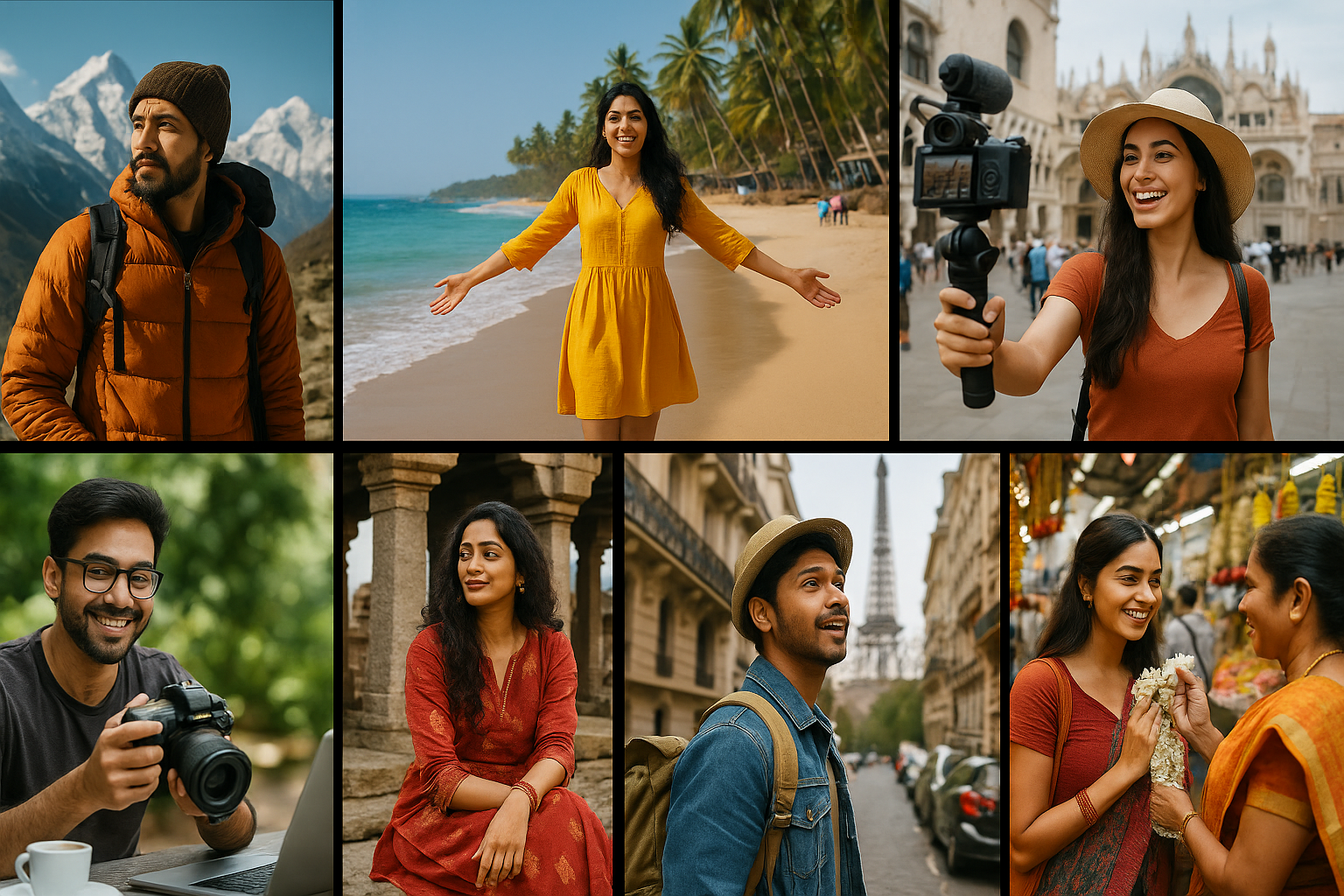With AI advancing at lightning speed, influencers no longer have to be human. Enter Zara Shatavari, India’s AI influencer who made the finals of the global Miss AI pageant. She’s not a trendy glitch she’s a fully scripted digital persona with her own style, voice, and presence. But creating her is a complex art, explained by her creator, Rahul Choudhry, in a recent Digit feature. Let’s unpack what goes into bringing an AI influencer to life and what it means for creator culture in India.
Step 1: Building a Believable Character
Creating Zara starts with storytelling, not just visuals. Rahul likens her to a “novel or film character” complete with a defined personality, backstory, world view, and emotional arc. This foundation ensures Zara’s content posts, captions, and stories feels coherent, relatable, and consistent over time.
Step 2: Crafting a Visual Identity
The visuals behind Zara use high-tech tools like MidJourney and custom-trained AI models. These tools allow her team to lock in specific features facial structure, body proportions, skin tone, hairstyles, even lighting mood to ensure that across content, Zara “looks” and “feels” like the same person in every frame.
In essence, they treat her images like a real model’s, just without the set or camera crew creating a glossy, consistent image across platforms.
Step 3: Unlimited Campaign Potential
What sets AI influencers apart is their limitless availability. Zara can appear in multiple campaigns, across time zones, at scale. She doesn’t need travel, downtime, or lifestyle days. Rahul notes she isn’t replacing humans, but offering “creative freedom without the limits of time, location, or logistics”.
Imagine a fully localized Zara reel in Tamil, a product story in Hindi, and a brand shoot in English all without needing a flight or extra budget. Scalability and uniformity are baked in.
Step 4: Projecting Authenticity?
Surprisingly, many fans don’t suspect Zara is virtual. She’s received marriage proposals, casting requests, and genuine DMs—some even asking for her to star in real shoots . That level of emotional investment proves a well-crafted avatar can inspire real human engagement.
But ethical concerns follow: How honest should creators be about AI? Should audiences always be informed?
What Creators Need: Tech & Talent
To build Zara, Rahul had to:
- Master storytelling: defining unique character traits and narrative arcs.
- Train AI models: using custom datasets for consistency across posts.
- Craft prompts: detailing her visuals pose, lighting, expression to keep her identity intact.
- Manage a production pipeline: from prompt to final visuals and copywriting.
It’s not a weekend project it’s a multidisciplinary, iterative process requiring creativity, ethics, and tech rigor.
Major Challenges Ahead
- Awareness gap: Despite Zara’s fame, many still believe she’s real. “That’s the biggest challenge awareness,” Rahul admits.
- Ethical clarity: Misleading audiences or mimicking real people can spark legal issues around likeness rights. Disclosure is key.
- Emotional limits: AI personas can feel perfect, but risk appearing hollow if they lack nuance or spontaneity.
- Technical overhead: From cloud computing to model training, running an AI influencer remains resource-intensive compared to hiring real talent.
The Business Angle: What Brands Gain
- Unlimited availability: Campaigns across languages, platforms, and time zones no fatigue, no travel.
- Full creative control: Brands can ensure Zara’s messaging aligns precisely with values no ad-libs or PR mishaps.
- Evergreen assets: A well-built AI avatar can persist indefinitely upgrading visuals and brand tie-ins while maintaining identity.
However, trust hinges on transparency. Brands need to clearly disclose AI-driven influencers to retain credibility.
Zara’s Future & Industry Impact
Zara is just one player in a growing field. India now hosts multiple AI influencers Kyra, Naina, Kavya Mehra, and Radhika Subramaniam each with unique niches from fashion to travel. As more join, differentiation will depend on authenticity, cultural nuance, and ethical clarity.
Will virtual influencing eclipse human? Not yet fans crave spontaneity, vulnerability, and imperfection. AI influencers can amplify systems, not replace souls.
Final Takeaway
Building Zara Shatavari was no simple AI gimmick. It was a storytelling feat requiring:
- Rich character design
- Precise visual consistency
- Tech and creative synergy
- Ethical guardrails
For brands and creators, AI influencers offer scale and control but must be wielded responsibly. Zara isn’t the end of human influence she’s a new channel demanding transparency, authenticity, and thoughtful execution.
FAQs
Q1. Is Zara Shatavari human?
No she’s a virtual influencer created by Rahul Choudhry using AI tools like MidJourney and custom prompts.
Q2. What makes her relatable?
A consistent backstory, visual identity, and emotional tone crafted like a film character makes Zara believable .
Q3. Can brands deploy AI influencers at scale?
Yes avatars can appear in campaigns across time zones and languages without logistical limits.
Q4. Are there ethical concerns?
Absolutely. Transparency about AI, cultural sensitivity, and avoiding likeness infringement are crucial.
Q5. Is this trend sustainable?
AI influencers fill a unique space but authenticity and human connection still matter. Brands mixing avatars and real creators may win trust.







